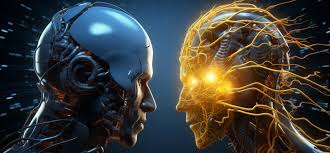The Evolution of AI: From Traditional to Physical AI
In the rapidly evolving landscape of artificial intelligence, the transition from traditional AI to physical AI marks a significant milestone in the capabilities of intelligent systems. This shift represents a new era where AI not only processes data and makes predictions but also interacts with the physical world through sensors, actuators, and autonomous decision-making. As organizations explore the potential of physical AI, it becomes imperative to understand the key differences, applications, and implications of this transformative technology.
Understanding the Journey
Over the past six decades, AI has progressed from Software 1.0, where code written by humans ran on CPUs, to Software 2.0, where neural networks learned from data using GPUs. The emergence of Generative AI further expanded the capabilities of machines to write, draw, and design. However, the advent of Physical AI represents a paradigm shift towards AI with a body, enabling robots, self-driving cars, and smart machines to sense, move, and interact with the real world.
Key Differences Between Traditional and Physical AI
Traditional AI operates in digital spaces, analyzing data and making decisions based on predefined rules. In contrast, Physical AI extends beyond digital boundaries, leveraging sensors and actuators to navigate physical environments, adapt to real-time conditions, and perform tasks that require interaction with the physical world. The table below highlights the key distinctions between Traditional AI and Physical AI:
| Aspect | Traditional AI | Physical AI |
|---|---|---|
| Analogy | Brain | Brain + Body |
| Presence | Disembodied | Embodied |
| Interaction | Digital Inputs | Sensors and Movement |
| Adaptability | Predefined Rules | Real-time Learning |
| Example | Predicting Customer Churn | Self-driving Cars |
| Main Focus | Decision-making | Decision-making and Physical Actions |
| Safety Application | Limited to Digital Environments | Crucial for Real-world Use Cases |
Applications and Implications of Physical AI
The integration of Physical AI in various industries has led to transformative applications such as smart robots in warehouses, human-like machines in healthcare, and adaptive tools in factories. These intelligent systems not only enhance efficiency and accuracy but also demonstrate the potential of AI to revolutionize traditional workflows and redefine human-machine collaboration. As organizations embrace Physical AI, they must consider the implications for safety, scalability, and ethical use of autonomous systems in real-world settings.
Generative Physical AI: A New Frontier
Generative Physical AI represents the convergence of generative AI and physical robotics, enabling machines to learn, adapt, and creatively respond to dynamic environments. By combining the ability to generate new content with the capacity to interact with the physical world, Generative Physical AI opens up new possibilities for autonomous decision-making and intelligent behavior. Organizations that harness the power of Generative Physical AI can gain a competitive edge in sectors such as logistics, healthcare, and manufacturing.
Conclusion: Embracing the Future of AI
As AI continues to evolve, the transition from traditional to physical AI signifies a fundamental shift in the capabilities of intelligent systems. By understanding the nuances of Physical AI, organizations can leverage its potential to drive innovation, enhance operational efficiency, and unlock new opportunities for growth. As we navigate the complex landscape of intelligent technologies, the synergy between human intelligence and AI remains critical, emphasizing the importance of human-machine collaboration in shaping the future of work and society.
FAQ
What is the difference between Traditional AI and Physical AI?
Traditional AI operates in digital spaces and focuses on decision-making based on data analysis, while Physical AI interacts with the physical world through sensors and actuators, enabling real-time adaptation and interaction with the environment.
How does Generative Physical AI differ from Traditional AI?
Generative Physical AI combines the generative capabilities of AI to create new content with the physical interaction and autonomous decision-making of Physical AI, resulting in a new frontier of intelligent systems that can learn, adapt, and creatively respond to dynamic environments.
Conclusion: The Future of AI
From traditional AI to physical AI, the evolution of intelligent systems continues to redefine the boundaries of human-machine interaction. As organizations embrace the transformative potential of Physical AI, they must navigate the complexities of integrating autonomous systems into real-world settings while leveraging the benefits of intelligent decision-making and adaptive behavior. By embracing the future of AI, organizations can drive innovation, enhance operational efficiency, and shape a new era of intelligent technologies.


